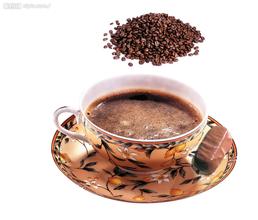Introduction to the Variety characteristics of Coffee beans in Vietnam
Vietnam's geographical location is very favorable for coffee cultivation. Southern Vietnam has a hot and humid tropical climate, which is suitable for growing ROBUSTA coffee, while the north is suitable for growing ARABICA coffee. Coffee production in Vietnam has the following characteristics: (1) because there is no effective way to deal with fallen leaves, medium-grain coffee was selected as the main variety in the early 1980s. (2) based on the planting technology, the coffee planting method was determined, that is, under the hot and humid climate in southern Vietnam, high density planting, large amount of irrigation, excessive fertilization and no shading trees were used to obtain the maximum yield and give full play to the production capacity of medium-grain coffee. The per unit yield of many coffee plantations in Daklak, Gia Lai, Kontum and Dong Nai areas of Vietnam reached 340t / ha. The yield of some plantations is even as high as 89.9 tons per hectare. (3) processing technology: mainly making full use of the solar energy drying method in the dry season in the plateau of central Vietnam to process coffee.
Coffee cultivation in Vietnam covers an area of about 500000 hectares, of which 10% are owned by state-owned enterprises and farms, and 85% by farmers and landowners. The scale of the manor is small, usually 2-5 hectares, and the large manor is about 30-50 hectares, but the number is small. Vietnamese coffee ranks second in all agricultural products exported from Vietnam, second only to rice. Every year, about 300000 farmers are engaged in coffee cultivation, with a labor force of 600000, and the labor force can reach 700000 to 800000 in the three-month harvest period. as a result, the coffee industry has absorbed 1.83% of the country's total labor force and 2.93% of the total agricultural labor force.
Vietnam Coffee Corporation (VINACAFE) is a 100% state-owned enterprise with 73 companies and farms under its jurisdiction. VINACAFE exports 20-25% of Vietnam's coffee production each year.
According to the business statistics of Vietnam Coffee Association, in 2000-2001 (from October 2000 to September 2001), a total of 874676 tons of coffee were exported from 149 units in Vietnam, of which the three largest exporters were OLAM (wholly foreign-owned enterprise, 21326 tons), DAKMAN (joint venture, 18076 tons) and VINAFIMEX (local enterprises, 13719 tons).

Important Notice :
前街咖啡 FrontStreet Coffee has moved to new addredd:
FrontStreet Coffee Address: 315,Donghua East Road,GuangZhou
Tel:020 38364473
- Prev

Yunnan Coffee Bean Flavor description method Variety characteristics Grinding scale Origin introduction
Choose the coffee mother tree which is fully ripe, normal in shape, full in shape, the same size and with two seeds. To remove the peel of the selected fruit, you must be careful to prevent the seeds from being damaged and affect the germination rate, then put the peeled seeds in a ventilated and cool place to dry, the shells can be whitened and the seeds can not be exposed to the sun. Put the seeds into bamboo baskets or cloth bags every month.
- Next

Introduction to the Flavor description treatment of Colombian Huilan Coffee Variety characteristics in producing areas
The pure taste of Colombian coffee comes from Colombia's natural environment with the most favorable conditions for coffee growth. But beyond that, it is inseparable from the hard work of local growers. In Colombia, coffee cultivation has reached 1.07 million hectares, there are about 302000 coffee plantations in the country, and 30 to 40 per cent of the rural population depends directly on coffee production. Columby
Related
- Detailed explanation of Jadeite planting Land in Panamanian Jadeite Manor introduction to the grading system of Jadeite competitive bidding, Red bid, Green bid and Rose Summer
- Story of Coffee planting in Brenka region of Costa Rica Stonehenge Manor anaerobic heavy honey treatment of flavor mouth
- What's on the barrel of Blue Mountain Coffee beans?
- Can American coffee also pull flowers? How to use hot American style to pull out a good-looking pattern?
- Can you make a cold extract with coffee beans? What is the right proportion for cold-extracted coffee formula?
- Indonesian PWN Gold Mandrine Coffee Origin Features Flavor How to Chong? Mandolin coffee is American.
- A brief introduction to the flavor characteristics of Brazilian yellow bourbon coffee beans
- What is the effect of different water quality on the flavor of cold-extracted coffee? What kind of water is best for brewing coffee?
- Why do you think of Rose Summer whenever you mention Panamanian coffee?
- Introduction to the characteristics of authentic blue mountain coffee bean producing areas? What is the CIB Coffee Authority in Jamaica?

